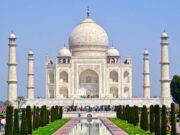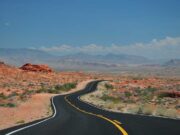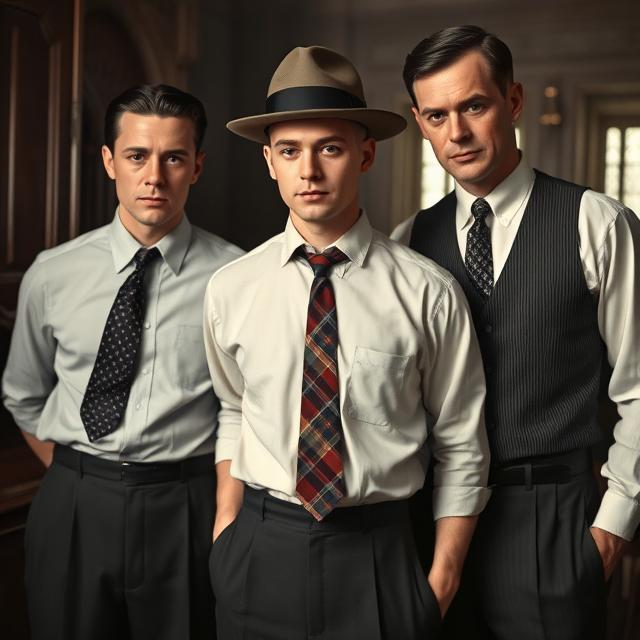The 1920s were a big shift in men’s fashion. Clothes became more relaxed but still looked sharp. Men dressed to show class but also comfort.
Suits Were a Must
Most men wore suits every day. Suits had wide shoulders, a slim waist, and straight pants. Dark colors like navy, gray, and brown were common. In summer, lighter suits in cream or white were popular.
Shirts and Ties
Men wore button-up shirts with round or pointed collars. White was the most common. Ties were thinner than today’s and came in bold colors or patterns. Bow ties were also in style, often for fancy events.
Vests and Sweaters
Vests (or waistcoats) were part of most suits. They added polish and were worn with or without jackets. In casual settings, men wore knitted sweaters or sweater vests with dress shirts and ties.
Hats Everywhere
Men almost always wore hats outside. The fedora was a top choice. Flat caps were popular too, especially for younger men or casual days.
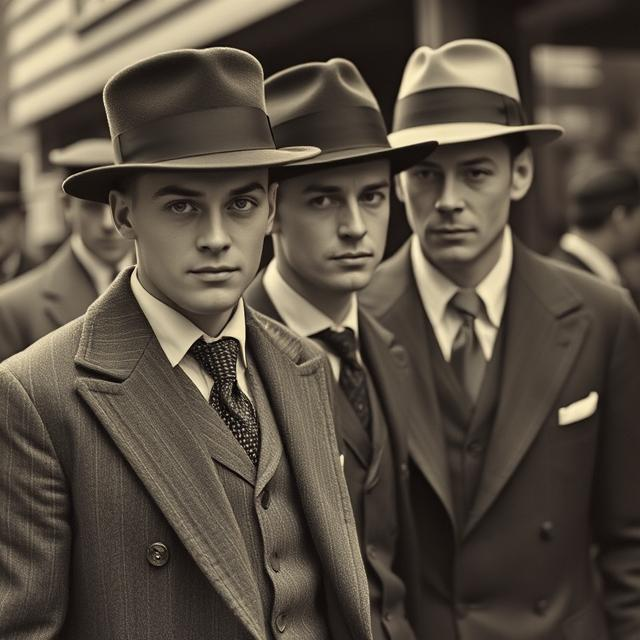
Shoes and Decorations
Two-tone shoes (often black and white) were trendy. Men also wore oxfords and brogues. Pocket watches, tie clips, and cufflinks added a clean finish to their look.
Casual Looks Grow
By the late 1920s, casual styles grew. Plus fours (baggy golf pants) and sweaters became common for weekend wear. This marked the beginning of a more relaxed fashion movement.
Suits Took Center Stage
In the 1920s, suits were a must. Men wore them every day. At work, at dinner, even at casual events.
Key suit features:
- Wide lapels
- High-waist pants
- Slim fit through the hips
- Cuffed pants
- Padded shoulders (later in the decade)
- Three-piece sets (jacket, vest, and pants)
Early in the decade, suits were boxy. By the late 1920s, they had more shape. Colors moved from dark tones to lighter ones. Grays, browns, and blues were popular.
Fabrics and Patterns
Wool was the most used fabric. It kept its shape and looked clean. Summer suits were made of linen or cotton. Patterns became bold. Checks, stripes, and herringbone were in. Men were not afraid to stand out.
Shirts and Collars
Dress shirts were white or pale in color. Pastels also grew in use. Many had thin stripes or small patterns. At the beginning of the decade, collars were characterized by their rigidity and height. Later, soft collars took over. Some were even detachable, so men could wash them easily.
Popular collar styles:
- Club (rounded)
- Pointed
- Spread
Ties and Bow Ties
Neckties were long and slim. Patterns were bright and fun. Geometric shapes and Art Deco designs were common. Bow ties were still worn, often for formal events. They came in many colors and fabrics.
Vests (Waistcoats)
Most men wore vests. These matched the suit or added a pop of color. Vests had five to six buttons and often had small pockets for watches.
Shoes and Socks
Two-tone shoes were in style. White and brown or white and black were favorites. Oxfords and brogues were top picks. They had laces and fine details. Socks had patterns. Argyle and stripes were popular. Bright colors were welcome, too.
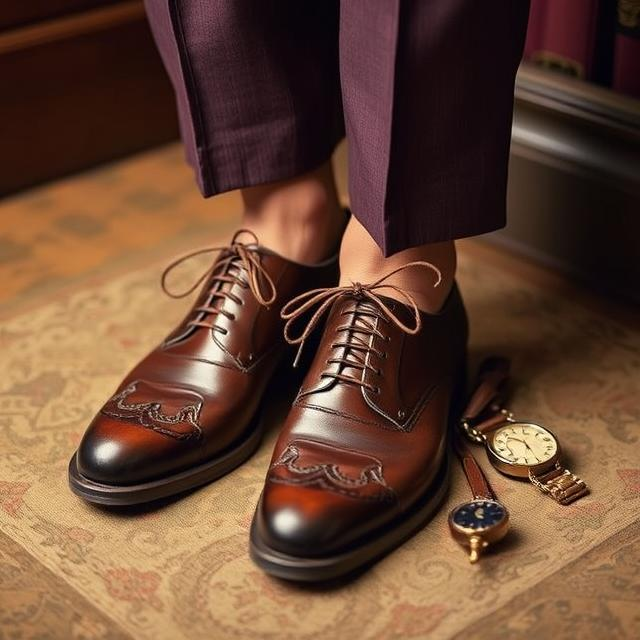
Hats Were a Must
Men didn’t leave home without a hat. It was part of the look.
Top hat styles:
- Fedora: soft brim, dented crown
- Boater: flat top and brim, straw build
- Newsboy cap: round, flat, casual
- Homburg: stiffer, formal
The hat matched the season. Felt in fall and winter. Straw in spring and summer.
Coats and Outerwear
For cold weather, men wore long wool coats. They were typically available in darker hues and featured broad lapels. Trench coats, first worn in war, became stylish. Leather jackets were rare but starting to gain attention.
Casual Clothing
Even at ease, men dressed neatly.
Popular casual pieces:
- Plus fours (baggy golf pants)
- Sweaters and sweater vests
- Knitted ties
- Linen shirts
- Light jackets
Tennis, golf, and boating influenced this relaxed look. So did college styles.
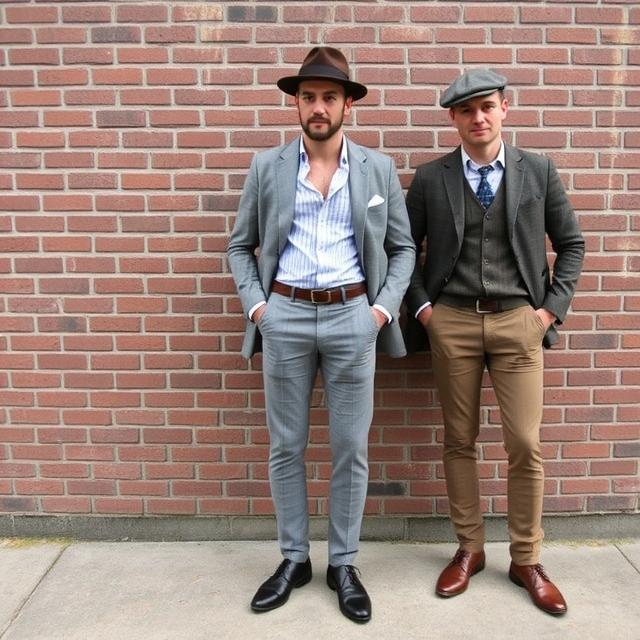
Accessories
Men paid attention to the little things.
- Pocket squares added color
- Cufflinks kept sleeves sharp
- Tie pins held things in place
- Watches, often with chains, added class
- Suspenders (braces) kept pants up before belts became common
Formal Wear
Evening events called for tuxedos or tailcoats.
Details:
- Black or midnight blue
- White shirt with a wingtip collar
- Black bow tie
- Vest or cummerbund
- Patent leather shoes
For high-society events, top hats and gloves were worn, too.
Hair and Grooming
Men kept their hair short and slicked back. Pomade gave a shiny finish. The side part was most common. Additionally, some men sported a neat fade on the sides. Mustaches were still in, but many men went clean-shaven. Grooming mattered. A neat look was a sign of class.
Style Icons of the 1920s
Celebrities helped shape trends.
- Rudolph Valentino—known for sleek suits and slick hair
- Clark Gable—clean lines and confident looks
- Duke of Windsor—brought flair and helped make the Windsor knot famous
- Harold Lloyd—smart glasses and fitted clothes
These men gave fashion a face.
Fashion and Class
Clothes showed status. Wealthy men had fine suits and tailors. Working men wore cheaper versions but still followed the style. Mass production made clothes more affordable. Men could dress well without being rich.
A Lasting Impact
The 1920s left a mark. It set the stage for modern men’s style. Suits became slimmer. Patterns got bolder. Men took pride in their look. Even now, the “Gatsby look” inspires fashion. Sharp suits, slick hair, and bold style live on.
1920s Men’s Fashion-A Sharp New Look
1920s men’s fashion was sharp and classic. Suits ruled the day, but casual styles started to sneak in. It was a time of clean lines, smart looks, and style that still inspires today. The 1920s brought big changes in men’s fashion. After World War I, people wanted to enjoy life. Clothes showed that shift. Men began dressing with more style and ease.

